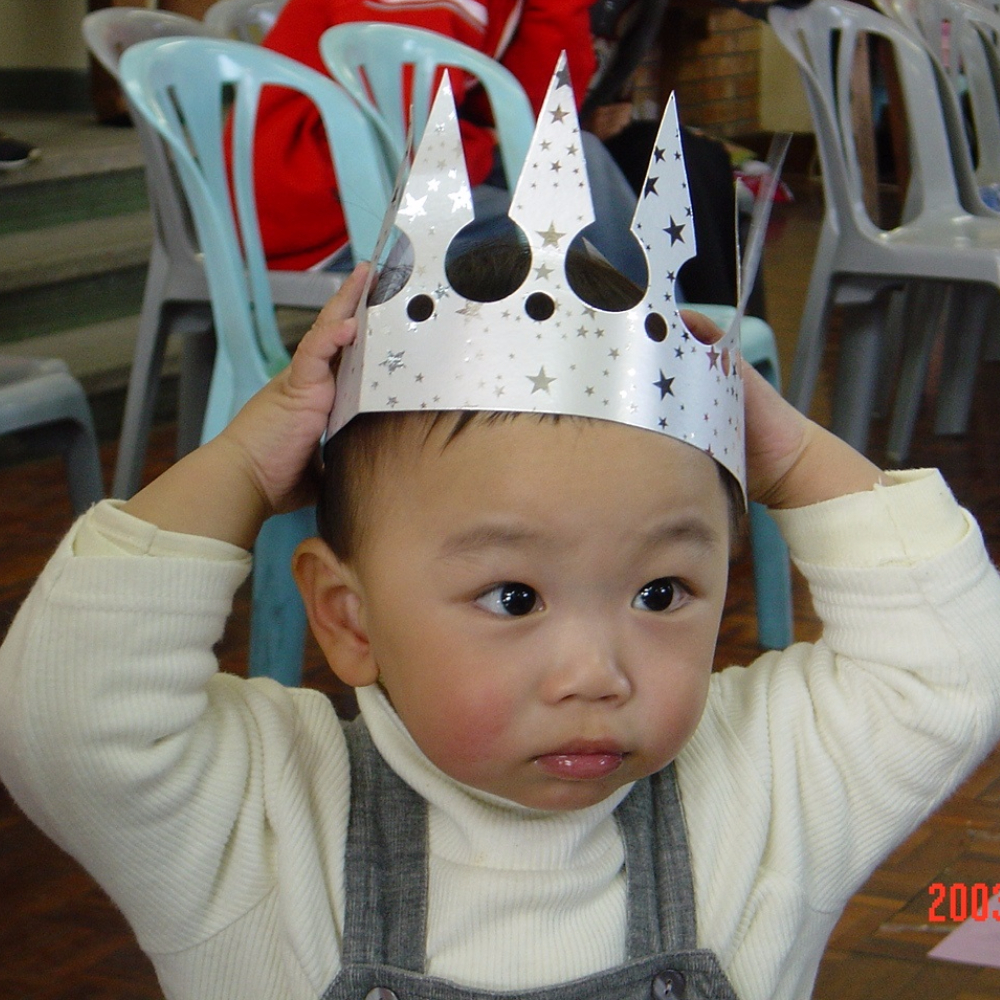more


Media Column
/
A New Chapter. A New Challenge.
No one knows what tomorrow brings. Not anyone.
Nor can we stop what tomorrow brings. No one can.
What we can do is to face whatever comes to us.
No one can imagine the changes of our hometown.
So we are....spreading all over the world, creating our new chapters of life.
Not an easy decision for anyone, for any family.
Struggling to adjust to the new life is a collabration of efforts among the families as well as supports from the extended families.
You may be experiencing struggles adjusting to daily routine, to changes in life, and even more, to get along with family members 24-7.
Never imagine how difficult it is to communicate with family members who used to be getting along well, but now has become the main challenge in life.
No one can fully understand how much struggle each person is experiencing, especially if he/she/they are not listened.
"I don't want to share my burden with her, she has enough to worry."
"She must regret coming here with me."
"I thought we could openly discuss our struggles, but it turns out not as expected."
"I feel sad and lonely, and it seems others are doing well. Is it only my problem?"
* * * * * * * * * * * * * * * * * * * * * *
I have seen several families here since I moved here.
They were lovely couples and had detailed plans before moving.
But they said they had never imagined that the struggles would be between they themselves.
Not something obviously serious, but tiny, daily things that drove them crazy.
Those daily problems were trivial yet troublesome, and could easily be handled if they were in their hometown.
"How come they became challenges to me here?"
"Just because you are not in a good state to handle them."
Yes, the couple were tired, too tired to solve seemingly simple tasks, too tired to embrace different opinions and too tired to "take it easy".
So, one, two, five, ten, twenty, fifty.....hundreds of misunderstandings, criticisms, arguments, verbal retaliations, cold treatments.....distant from each others.
What do they need to solve the problems? How to loosen up the tension?
What they need is TIME and SPACE.
TIME to listen.
SPACE to embrace.
Find someone to help whenever necessary.....friends, family and professionals.
Remember the original intentions of the decision to come.
There are always suitable keys to locks.
Nor can we stop what tomorrow brings. No one can.
What we can do is to face whatever comes to us.
No one can imagine the changes of our hometown.
So we are....spreading all over the world, creating our new chapters of life.
Not an easy decision for anyone, for any family.
Struggling to adjust to the new life is a collabration of efforts among the families as well as supports from the extended families.
You may be experiencing struggles adjusting to daily routine, to changes in life, and even more, to get along with family members 24-7.
Never imagine how difficult it is to communicate with family members who used to be getting along well, but now has become the main challenge in life.
No one can fully understand how much struggle each person is experiencing, especially if he/she/they are not listened.
"I don't want to share my burden with her, she has enough to worry."
"She must regret coming here with me."
"I thought we could openly discuss our struggles, but it turns out not as expected."
"I feel sad and lonely, and it seems others are doing well. Is it only my problem?"
* * * * * * * * * * * * * * * * * * * * * *
I have seen several families here since I moved here.
They were lovely couples and had detailed plans before moving.
But they said they had never imagined that the struggles would be between they themselves.
Not something obviously serious, but tiny, daily things that drove them crazy.
Those daily problems were trivial yet troublesome, and could easily be handled if they were in their hometown.
"How come they became challenges to me here?"
"Just because you are not in a good state to handle them."
Yes, the couple were tired, too tired to solve seemingly simple tasks, too tired to embrace different opinions and too tired to "take it easy".
So, one, two, five, ten, twenty, fifty.....hundreds of misunderstandings, criticisms, arguments, verbal retaliations, cold treatments.....distant from each others.
What do they need to solve the problems? How to loosen up the tension?
What they need is TIME and SPACE.
TIME to listen.
SPACE to embrace.
Find someone to help whenever necessary.....friends, family and professionals.
Remember the original intentions of the decision to come.
There are always suitable keys to locks.
more


Media Column
/
逆流中的安樂窩
more


Media Column
/
難捨A級丈夫
more


Media Column
/
誰明我心:丈夫消失 4個月沒說一句話
more


Media Column
/
誰明我心:恐懼搭車被責無用 笑裏藏苦
more


Media Column
/
重整人生目標的優次
more


Media Column
/
片段閃不停 終日發呆痛哭 好友離世 陷創傷後壓力症
more


Media Column
/
考試壓力爆表 爸媽忌囉嗦!
more


Media Column
/
踢走電子奶嘴 低頭族從小杜絕
more


Media Column
/
父母感情不穩 孩子無奈無助
more


Media Column
/
升中壓力拖垮優異生 兒子抑鬱 母墮情緒漩渦

more


Media Column
/
小一生被驚所困 上學哭不停
more


Media Column
/
父母讚賞與肯定 孩子自信心基石
more


Media Column
/
跟樹木做朋友 為何要排擠我?
more


Media Column
/
小童妥瑞症發作 愈罵愈失控
more


Media Column
/
70-79 分的人生
more


Media Column
/
完美的虧損
more


Media Column
/
將「學障」變「健將」

more


Media Column
/
分離令我很焦慮
more


Media Column
/
親愛的媽媽不見了
more


Media Column
/
世界變灰了
more


Media Column
/
掌聲背後的失落
more


Media Column
/
父母的焦慮、孩子的焦慮

more


Media Column
/
培養樂觀孩子

more


Media Column
/
在寧靜中尋找新思維

more


Mindful Sharing
/
你是否真正活着?

more


Mindful Sharing
/
跳出框框 打開你的腦創意
more


Media Column
/
Eating Disorders ~ Not Just an Eating Problem
Recently, I have seen several adolescents suffering from severe eating disorders. All were suffered from anorexia nervosa and required immediate hospitalization. Both girls, at their late teens, were emaciated, with only 26-28 kg. They were both on the verge of dying. However, they were still rigid and struggled a lot with eating. Their parents were so desperate and yet, still tried very hard seeking treatment for their physically-at-risk daughters. Patients with eating disorders are facing not merely an eating problem, but also complicated underlying psychological issues.
According to the Diagnostic and Statistical Manual – Fifth Edition (DSM-5) (APA, 2013), Eating Disorders include the following categories:
buy uk replica watches with Swisss movements for men and women online.
Prevalence of Anorexia Nervosa
Among the above types of eating disorders, the prevalence rate of Anorexia Nervosa and Bulimia Nervosa is 0.4% and 1-1.5% respectively (APA, 2013). In Hong Kong, there is no epidemiology study on eating disorders; therefore no actual statistics has been obtained so far. Eating disorders are less common in males than in females. The female-to-male ratio is approximately 10:1 among clinical populations (APA, 2013).
Anorexia Nervosa can be a life-threatening disorder as it may lead to severe medical complications, e.g. sinus bradycardia, hypokalemia, hypothermia and lethargy. Among young female patients, the crude mortality rate of anorexia nervosa is 5% per decade, higher than that of Bulimia Nervosa, i.e. 2% (APA, 2013). Major causes of death are medical complications associated with the disorder itself or from suicide.
Bipolar affective disorders, major depressive disorders and anxiety disorders are commonly co-occurring mood disorders among patients with anorexia nervosa (APA, 2013). Obsessive compulsive symptoms are found in some patients with anorexia nervosa, especially those with restrictive type (Fahy, 1991). For the binge-eating / purging type, alcohol or substance use problems may be the comorbid issues in these patients (Dawe & Loxton, 2004).
Three Essential Features of Anorexia Nervosa (APA, 2013)
We often consider the Body-Mass Index (BMI) as one of the benchmarks to assess the level of severity in eating disorders, however, for children & adolescents, we also take into account whether they meet their expected growth trajectory (APA, 2013).
Presentations of patients suffering from Anorexia Nervosa
Behaviorally, the onset of eating disorders often begins with dieting. The patients have very critical evaluation of their body size and or body weight. They weigh themselves frequently, measure their body parts obsessively and check their body size repeatedly in the mirror. They do excessive physical exercises to accelerate weight loss. Some of them use medication, e.g. laxatives, diuretics, to help them “maintaining” their body weight (Fairburn, 2003). One may think that patients with anorexia nervosa do not like eating. On the contrary, they love food and are preoccupied with thoughts of food very often. They collect recipes and hoard food. They like to cook for other people and enjoy seeing people eating.
Psychologically, they overly restrain their emotional expression. They have intense fear of becoming fat, and cannot be alleviated even by weight loss. They are anxious about having calorie intake beyond their plan, which is often very rigid. They calculate calories or even weigh every piece of food before eating, so as to ensure that they eat “adequate amount” of food within their plan. Some of the patients also exhibit impulse control problem, especially those patients with binge-eating/purging type of anorexia nervosa (Dawe & Loxton, 2004). They are more likely to abuse alcohol and other drugs. Some may even involve in theft due to their impulsivity. As said, most are comorbid with other psychological disorders, such as anxiety, depressive mood and obsessive symptoms (Swift et al., 1986).
Physiologically, patients suffering from anorexia nervosa, especially those involve the use of purging to control the amount of food intake, likely suffer from physiological disturbances, including vital sign abnormalities, erosion of dental enamel, electrolyte imbalance, loss of bone mineral density, hair loss and amenorrhea (Fairburn, 2003). They have difficulties maintaining a body weight hitting a minimal normal for age, sex, developmental trajectory, and physical health. Most of them do not recognize serious medical implications of their malnourished state, until they are brought to medical professionals by their family members. Therefore, I often receive referrals from physicians, cardiologists, gynecologists, endocrinologists, and paediatricians.
Factors leading to Anorexia Nervosa
Causes of Eating Disorders are multi-factorial, not solely caused by personal factors (intentional weight reduction), but also affected by complicated socio-psychological factors.
Anorexia Nervosa commonly begins during adolescence or young adults, with peak of onset at the age between 16 and 20, coincide with their developmental task of identity formation (Erikson, 1959, 1968). Adolescents with fragile self-esteem, perfectionistic and socially desirable trait will likely fall into the trap of seeking social cognition and approval to establish their own “selves”. Emotionally, people with anxious-prone and obsessive-compulsive trait, poor mood regulation, low frustration tolerance, as well as fragile to boredom and loneliness are also at risk of developing into eating disorders (Fairburn, 1999).
Cognitively, people with anorexia nervosa have relentless pursuit of thinness (Fairburn, 2003). Their thinking styles are mostly rigid, egocentric and dichotomous. They often reason by their emotion and distorted perception, especially in self-evaluation and social comparison. They are lack of insight to their problems, and have distorted views on their body weight and shape, either feeling globally overweight or concern certain body parts, e.g. thigh or tummy, which in turn maintain their eating disorders (Fairburn, 1999).
Research studies showed that biological predisposition and family dynamics are also factors precipitating the development of eating disorders among adolescents and young adults. Genetically, there is an increased risk of anorexia nervosa among first-degree biological relatives of individuals with the disorder (Fairburn & Harrison, 2003; Bulik et al., 2006). Besides, there is also an association between mood disorders and eating disorders among first-degree biological relatives of individuals with the disorder (Swift et al., 1986).
In terms of family dynamic, young adolescents and adults, with autonomy and separation issues at their developmental stage (Erikson, 1968), facing the dilemma of “growing up” and “independent” issues. They expect themselves to be independent at their developmental stage; however, they are anxious about leaving their parents’ safety zone and couldn’t move forward without their approval and recognition. Adolescents and young adults who are raised in families with protective parenting may experience crisis of establishing their own identities in this dilemma and perceived lack of control, or being controlled (Williams, et al., 2011). Control issue is the core psychopathology of eating disorders. The balance between over-control and under-control is lost in these patients (Fairburn, 1999). Some patients found “eating or not eating” as the most accessible way to get control in lives and the outcome is instant, i.e. weight control. However, the issue of control is not merely an internal struggle, but also an external one, with their parents and caregivers over the dining table (Minuchin et al., 2009).
One should not overlook the influence of social and cultural norm, that exert great forces onto some adolescents who are vulnerable to avocation of thinness and become “fat phobia”. Adolescents, at their developmental stage, are fragile to media influences (Fairburn, 2003). The concept of “thinness equals to success or happiness” inevitably drive some girls to engage in dieting, purging, excessive physical exercises and even starving themselves, and eventually become victims of eating disorders. These media standards of the ideal are difficult or even impossible to achieve, however, under social comparison, adolescent girls fall into the trap of “achievement” and “building self-confidence”.
Men and women are both worth the canada aaa cheap cartier replica watches for sale.
Walking with patients suffering from eating disorders is by no means an easy task. Apart from struggling with their rigidity and distorted views of self-evaluations, working with their parents is also an essential part of the treatment. For those severely underweight patients, weight restoration is the first goal to achieve. Psychological intervention targeted on rebuilding positive concept of eating and self-evaluation; restructuring distorted thinking style; restoring adequate behavioral pattern; as well as re-establishing adaptive family interaction are essential to bring about recovery to patients suffering from eating disorders.
According to the Diagnostic and Statistical Manual – Fifth Edition (DSM-5) (APA, 2013), Eating Disorders include the following categories:
- Anorexia Nervosa (Restrictive type/Binge-eating/purging type)
buy uk replica watches with Swisss movements for men and women online.
- Bulimia Nervosa
- Binge-Eating Disorder
- Other Specified Feeding or Eating Disorder
Prevalence of Anorexia Nervosa
Among the above types of eating disorders, the prevalence rate of Anorexia Nervosa and Bulimia Nervosa is 0.4% and 1-1.5% respectively (APA, 2013). In Hong Kong, there is no epidemiology study on eating disorders; therefore no actual statistics has been obtained so far. Eating disorders are less common in males than in females. The female-to-male ratio is approximately 10:1 among clinical populations (APA, 2013).
Anorexia Nervosa can be a life-threatening disorder as it may lead to severe medical complications, e.g. sinus bradycardia, hypokalemia, hypothermia and lethargy. Among young female patients, the crude mortality rate of anorexia nervosa is 5% per decade, higher than that of Bulimia Nervosa, i.e. 2% (APA, 2013). Major causes of death are medical complications associated with the disorder itself or from suicide.
Bipolar affective disorders, major depressive disorders and anxiety disorders are commonly co-occurring mood disorders among patients with anorexia nervosa (APA, 2013). Obsessive compulsive symptoms are found in some patients with anorexia nervosa, especially those with restrictive type (Fahy, 1991). For the binge-eating / purging type, alcohol or substance use problems may be the comorbid issues in these patients (Dawe & Loxton, 2004).
Three Essential Features of Anorexia Nervosa (APA, 2013)
- Persistent energy intake restriction
- Intense fear of gaining weight or of becoming fat, or persistent behavior that interferes with weight gain
- A disturbance in self-perceived weight or shape
We often consider the Body-Mass Index (BMI) as one of the benchmarks to assess the level of severity in eating disorders, however, for children & adolescents, we also take into account whether they meet their expected growth trajectory (APA, 2013).
Presentations of patients suffering from Anorexia Nervosa
Behaviorally, the onset of eating disorders often begins with dieting. The patients have very critical evaluation of their body size and or body weight. They weigh themselves frequently, measure their body parts obsessively and check their body size repeatedly in the mirror. They do excessive physical exercises to accelerate weight loss. Some of them use medication, e.g. laxatives, diuretics, to help them “maintaining” their body weight (Fairburn, 2003). One may think that patients with anorexia nervosa do not like eating. On the contrary, they love food and are preoccupied with thoughts of food very often. They collect recipes and hoard food. They like to cook for other people and enjoy seeing people eating.
Psychologically, they overly restrain their emotional expression. They have intense fear of becoming fat, and cannot be alleviated even by weight loss. They are anxious about having calorie intake beyond their plan, which is often very rigid. They calculate calories or even weigh every piece of food before eating, so as to ensure that they eat “adequate amount” of food within their plan. Some of the patients also exhibit impulse control problem, especially those patients with binge-eating/purging type of anorexia nervosa (Dawe & Loxton, 2004). They are more likely to abuse alcohol and other drugs. Some may even involve in theft due to their impulsivity. As said, most are comorbid with other psychological disorders, such as anxiety, depressive mood and obsessive symptoms (Swift et al., 1986).
Physiologically, patients suffering from anorexia nervosa, especially those involve the use of purging to control the amount of food intake, likely suffer from physiological disturbances, including vital sign abnormalities, erosion of dental enamel, electrolyte imbalance, loss of bone mineral density, hair loss and amenorrhea (Fairburn, 2003). They have difficulties maintaining a body weight hitting a minimal normal for age, sex, developmental trajectory, and physical health. Most of them do not recognize serious medical implications of their malnourished state, until they are brought to medical professionals by their family members. Therefore, I often receive referrals from physicians, cardiologists, gynecologists, endocrinologists, and paediatricians.
Factors leading to Anorexia Nervosa
Causes of Eating Disorders are multi-factorial, not solely caused by personal factors (intentional weight reduction), but also affected by complicated socio-psychological factors.
Anorexia Nervosa commonly begins during adolescence or young adults, with peak of onset at the age between 16 and 20, coincide with their developmental task of identity formation (Erikson, 1959, 1968). Adolescents with fragile self-esteem, perfectionistic and socially desirable trait will likely fall into the trap of seeking social cognition and approval to establish their own “selves”. Emotionally, people with anxious-prone and obsessive-compulsive trait, poor mood regulation, low frustration tolerance, as well as fragile to boredom and loneliness are also at risk of developing into eating disorders (Fairburn, 1999).
Cognitively, people with anorexia nervosa have relentless pursuit of thinness (Fairburn, 2003). Their thinking styles are mostly rigid, egocentric and dichotomous. They often reason by their emotion and distorted perception, especially in self-evaluation and social comparison. They are lack of insight to their problems, and have distorted views on their body weight and shape, either feeling globally overweight or concern certain body parts, e.g. thigh or tummy, which in turn maintain their eating disorders (Fairburn, 1999).
Research studies showed that biological predisposition and family dynamics are also factors precipitating the development of eating disorders among adolescents and young adults. Genetically, there is an increased risk of anorexia nervosa among first-degree biological relatives of individuals with the disorder (Fairburn & Harrison, 2003; Bulik et al., 2006). Besides, there is also an association between mood disorders and eating disorders among first-degree biological relatives of individuals with the disorder (Swift et al., 1986).
In terms of family dynamic, young adolescents and adults, with autonomy and separation issues at their developmental stage (Erikson, 1968), facing the dilemma of “growing up” and “independent” issues. They expect themselves to be independent at their developmental stage; however, they are anxious about leaving their parents’ safety zone and couldn’t move forward without their approval and recognition. Adolescents and young adults who are raised in families with protective parenting may experience crisis of establishing their own identities in this dilemma and perceived lack of control, or being controlled (Williams, et al., 2011). Control issue is the core psychopathology of eating disorders. The balance between over-control and under-control is lost in these patients (Fairburn, 1999). Some patients found “eating or not eating” as the most accessible way to get control in lives and the outcome is instant, i.e. weight control. However, the issue of control is not merely an internal struggle, but also an external one, with their parents and caregivers over the dining table (Minuchin et al., 2009).
One should not overlook the influence of social and cultural norm, that exert great forces onto some adolescents who are vulnerable to avocation of thinness and become “fat phobia”. Adolescents, at their developmental stage, are fragile to media influences (Fairburn, 2003). The concept of “thinness equals to success or happiness” inevitably drive some girls to engage in dieting, purging, excessive physical exercises and even starving themselves, and eventually become victims of eating disorders. These media standards of the ideal are difficult or even impossible to achieve, however, under social comparison, adolescent girls fall into the trap of “achievement” and “building self-confidence”.
Men and women are both worth the canada aaa cheap cartier replica watches for sale.
Walking with patients suffering from eating disorders is by no means an easy task. Apart from struggling with their rigidity and distorted views of self-evaluations, working with their parents is also an essential part of the treatment. For those severely underweight patients, weight restoration is the first goal to achieve. Psychological intervention targeted on rebuilding positive concept of eating and self-evaluation; restructuring distorted thinking style; restoring adequate behavioral pattern; as well as re-establishing adaptive family interaction are essential to bring about recovery to patients suffering from eating disorders.

more


Media Column
/
培養一個真正「優勝」的孩子
經常有家長這樣對我說:我不想自己的孩子變成「港孩」、也擔心自己會變成一個「怪獸家長」,但在這個充滿競爭的社會裏,如果不努力去增值、去爭取機會,去讓孩子學得「精靈」一點,怕他們將來會很「蝕底」。
於是各方家長便爭相為孩子報讀各式各樣的精英、尖子課程,結果起跑線便被訂得越來越早,致令仍在襁褓的幼兒被迫失去了理應無掛無慮的童年。我還記得有一位家長這樣對我說:「我不想我的孩子輸在起跑線........因為我也不想輸!」
也怪不得家長們,其實他們也承受了不少的壓力。What's app群組確實是個不可輕看的壓力來源,無日無之的「第一手消息」、「六歲前必要上的二十個課程」 、「不要錯過黃金訓練階段」、「做與不做」、"To be or not to be" 迫得家長不得不為了子女將來的「幸福」而變得越來越「怪獸」,生怕如果不跟隨大勢、孩子便會失勢。可悲的是,大家都不自覺地陷入了這個胡同!
在我的工作裏,看見很多不快樂、很疲倦的孩子,當然他們的家長也都是很不快樂!家長和孩子互相抱怨對方的不是,有時甚至反目成仇!這一切都是源於外在環境的壓力以致令家長們生起一份莫名的「恐懼」和孩子對現實的「無奈」!
其實,讓孩子真正「優勝」的最佳方法,是自小培養他們的快樂和幸福感。讓他們在父母給予的安全感下,發揮自己的潛能!人生是一場馬拉松,贏在起跑線的人未必能在成長中排除萬難,有後勁到達成功地。勝出者往往都是具有健康的心理質素、擁有正面的思維和自我效能感的知足快樂人。
那麼,家長應該怎樣做才可以培養孩子有上述的正面質素?我認為「玩」、「伴」很重要。
「玩」對孩子很重要。父母打從孩子在嬰兒期時便要學做孩子的好玩伴。玩耍可以讓孩子跟父母建立一份親密的關係和穩固的安全感。玩也要「學」?是的!因為原來很多父母也不懂得跟孩子玩耍,這往往與他們的成長很有關係。所以父母也要因應自己的成長和孩子的性情,跟孩子邊玩邊學,從而成為孩子的好玩伴,將來才可以成為他的好朋友。
「伴」— 陪伴孩子成長,跟他們一起經歷他們成長的每個重要的時刻、每次起與落、成功與失敗。少批評,多鼓勵,讓孩子覺得自己在父母心中是好的,是有價值的,是值得被愛的。這樣孩子才能踏穩人生每一步,將來成為一個自愛、自信、自重和有抗逆力的人。擁有這些特質的孩子會更有勇氣面對挑戰,無論在學業和人際關係上也必會優勝過人。這樣,才是真正的勝利!
今天,就讓我們重新檢視我們教育孩子的目標,將心力培養一個真正快樂、知足感恩、肯承擔責任、懂得自律,和擁有生活智慧的孩子。
於是各方家長便爭相為孩子報讀各式各樣的精英、尖子課程,結果起跑線便被訂得越來越早,致令仍在襁褓的幼兒被迫失去了理應無掛無慮的童年。我還記得有一位家長這樣對我說:「我不想我的孩子輸在起跑線........因為我也不想輸!」
也怪不得家長們,其實他們也承受了不少的壓力。What's app群組確實是個不可輕看的壓力來源,無日無之的「第一手消息」、「六歲前必要上的二十個課程」 、「不要錯過黃金訓練階段」、「做與不做」、"To be or not to be" 迫得家長不得不為了子女將來的「幸福」而變得越來越「怪獸」,生怕如果不跟隨大勢、孩子便會失勢。可悲的是,大家都不自覺地陷入了這個胡同!
在我的工作裏,看見很多不快樂、很疲倦的孩子,當然他們的家長也都是很不快樂!家長和孩子互相抱怨對方的不是,有時甚至反目成仇!這一切都是源於外在環境的壓力以致令家長們生起一份莫名的「恐懼」和孩子對現實的「無奈」!
其實,讓孩子真正「優勝」的最佳方法,是自小培養他們的快樂和幸福感。讓他們在父母給予的安全感下,發揮自己的潛能!人生是一場馬拉松,贏在起跑線的人未必能在成長中排除萬難,有後勁到達成功地。勝出者往往都是具有健康的心理質素、擁有正面的思維和自我效能感的知足快樂人。
那麼,家長應該怎樣做才可以培養孩子有上述的正面質素?我認為「玩」、「伴」很重要。
「玩」對孩子很重要。父母打從孩子在嬰兒期時便要學做孩子的好玩伴。玩耍可以讓孩子跟父母建立一份親密的關係和穩固的安全感。玩也要「學」?是的!因為原來很多父母也不懂得跟孩子玩耍,這往往與他們的成長很有關係。所以父母也要因應自己的成長和孩子的性情,跟孩子邊玩邊學,從而成為孩子的好玩伴,將來才可以成為他的好朋友。
「伴」— 陪伴孩子成長,跟他們一起經歷他們成長的每個重要的時刻、每次起與落、成功與失敗。少批評,多鼓勵,讓孩子覺得自己在父母心中是好的,是有價值的,是值得被愛的。這樣孩子才能踏穩人生每一步,將來成為一個自愛、自信、自重和有抗逆力的人。擁有這些特質的孩子會更有勇氣面對挑戰,無論在學業和人際關係上也必會優勝過人。這樣,才是真正的勝利!
今天,就讓我們重新檢視我們教育孩子的目標,將心力培養一個真正快樂、知足感恩、肯承擔責任、懂得自律,和擁有生活智慧的孩子。
more


Media Column
/
Mood disorders in children

more


Mindful Sharing
/
喧鬧聲中的寧靜
more


Media Column
/
Handling Children Anxiety
“My son worries a lot and never makes attempts to try….”
“My child said he didn’t want to go to school……”
“My daughter always cries for trivial setbacks and her classmates often laugh at her, what should I do?”
Parents in my clinics often linger worries over their children’s emotion, abilities to overcome setbacks in life, and confidence in facing academic and social challenges in life. Some children even exhibit mood symptoms that impair their daily functioning and psychological health.
You can buy aaa swiss cheap replica watches with little money on this online store.
Childhood should be a time for joy, fun and exploration, and a relatively “worry-free” period. Unfortunately, some (may be most) children in Hong Kong are shouldering a heavy burden not only on their studies, but also spending their limited leisure time to "equip themselves" with the many so called “learning with fun” courses that, in some cases, added unnecessary stress to the children. When the children are unable to cope with this "imbalance" life, they may feel helpless to face their daily problems and revive their curosity to explore new knowledge. If conditions persist, some children may even suffer from different kinds of mood problem and manifest into behavioral problems, e.g. anxiety, anger, low mood, oppositional behavior or even school refusal.
In fact, most children in their childhood may have some “normal anxiety” over something or some situations, e.g. toddlers feel restless and anxious when they are separated from their parents or caregivers, some children felt fearful in darkness, in thunderstorm. Normally, these children can grow out of their anxiety gradually. However, if the fear or worries persisted or even escalating, and also impair their daily functioning, e.g. affect their studies, sleep and appetite, reduce concentration and attention, mood fluctuation, increased restless, then these may be the clinical signs that needed to be intervened by specialist, e.g. child psychiatrists or clinical psychologists.
Mood Disorders in Children
Some people may think that only adults will have mood problems. Surely not! Mood disorders, e.g. anxiety disorders and depressive disorders also found among children. According to the statistics of the Department of Health, Hong Kong, the prevalence of anxiety disorders among school-aged children is 8% to 10%, with girls more common than boys.
Children with anxiety disorders express more worries than their same-aged peers. They become anxious and nervous more easily towards some situations and things and exhibit a disproportionally high anxiety and fear, as compared with the reaction of other same-aged children. For examples, some children may refuse to take lifts anymore after they watched TV news on lift accidents. Some children may anticipate the happening of some anxiety-provoking situations and over-prepared themselves to face them, e.g. they may bring along all text books and exercise books to school every day (even though not all subjects will be taught on the same day) to avoid being scolded by teachers for not bringing any of them; some even avoid going to toilet during recess as worry about not able to return to classroom on time. Some children worry about separating from their parents, so they will call their parents many times a day to check their safety. I have also seen some children refusing to go to school as they want to stay with a family member who suffered from severe illness, such as cancer, as they worry that once they go to school, the family member may die.
Early Identification Early Intervention
Since children are less expressive and they may also be weak at understanding and regulation their own emotion, therefore the children may not aware that they may have suffered from mood problems. Instead of expressing their emotion verbally, children may unconsciously express through their physical symptoms, e .g. they may complain headache, stomache, nausea, fatigue, poor sleep, fair appetite. These symptoms often appear when they are experiencing or about to face stressful situations like performances, competitions, tests and examinations, or when they involve in social conflicts or pressures from teachers or parents. Through active listening to children on their daily life, e.g. repeting same social or academic problem and observing their physical and emotional responses, parents may be able to identify some cues of their emotional states.
Research evidences show that there are associations among genetic factor, physiological factor and children’s temperament in childhood anxiety problems. Besides, psychological and environmental factors also associate with childhood anxiety. Psychologically, negative cognitive style, perfectionistic trait, fragile to failures, low frustration or distress tolerance, lack of problem solving skills, or high academic expectation are risk factors to anxiety problems. Environmental factors like social conflict, bullying, parents’ divorce, new sibling, or poor adjustment to change of environment, e.g. new school, new home, may also trigger children’s anxiety. As for parenting style, research evidences also suggest that overprotective parenting style also reinforces children’s anxiety; controlling or strict parenting styles may lead to adverse effect to the psychological development of children.
If you wanna buy ca swiss top replica watches, you cannot miss this website.
You cannot miss this luxury rolex replica watches us online store.
Cognitive Behavioral Therapy for coping with anxiety
Understanding and accepting children’s anxiety helps children to face their anxiety. Cognitive Behavioral Therapy is an evidence-based psychological treatment for anxiety disorders. Through identifying and challenging their own negative thoughts and engaging themselves in behavioral experiments to face anxiety-provoking situations step-by-step, children can learn skills to cope with cope their anxiety and regain their psychological health.
“My child said he didn’t want to go to school……”
“My daughter always cries for trivial setbacks and her classmates often laugh at her, what should I do?”
Parents in my clinics often linger worries over their children’s emotion, abilities to overcome setbacks in life, and confidence in facing academic and social challenges in life. Some children even exhibit mood symptoms that impair their daily functioning and psychological health.
You can buy aaa swiss cheap replica watches with little money on this online store.
Childhood should be a time for joy, fun and exploration, and a relatively “worry-free” period. Unfortunately, some (may be most) children in Hong Kong are shouldering a heavy burden not only on their studies, but also spending their limited leisure time to "equip themselves" with the many so called “learning with fun” courses that, in some cases, added unnecessary stress to the children. When the children are unable to cope with this "imbalance" life, they may feel helpless to face their daily problems and revive their curosity to explore new knowledge. If conditions persist, some children may even suffer from different kinds of mood problem and manifest into behavioral problems, e.g. anxiety, anger, low mood, oppositional behavior or even school refusal.
In fact, most children in their childhood may have some “normal anxiety” over something or some situations, e.g. toddlers feel restless and anxious when they are separated from their parents or caregivers, some children felt fearful in darkness, in thunderstorm. Normally, these children can grow out of their anxiety gradually. However, if the fear or worries persisted or even escalating, and also impair their daily functioning, e.g. affect their studies, sleep and appetite, reduce concentration and attention, mood fluctuation, increased restless, then these may be the clinical signs that needed to be intervened by specialist, e.g. child psychiatrists or clinical psychologists.
Mood Disorders in Children
Some people may think that only adults will have mood problems. Surely not! Mood disorders, e.g. anxiety disorders and depressive disorders also found among children. According to the statistics of the Department of Health, Hong Kong, the prevalence of anxiety disorders among school-aged children is 8% to 10%, with girls more common than boys.
Children with anxiety disorders express more worries than their same-aged peers. They become anxious and nervous more easily towards some situations and things and exhibit a disproportionally high anxiety and fear, as compared with the reaction of other same-aged children. For examples, some children may refuse to take lifts anymore after they watched TV news on lift accidents. Some children may anticipate the happening of some anxiety-provoking situations and over-prepared themselves to face them, e.g. they may bring along all text books and exercise books to school every day (even though not all subjects will be taught on the same day) to avoid being scolded by teachers for not bringing any of them; some even avoid going to toilet during recess as worry about not able to return to classroom on time. Some children worry about separating from their parents, so they will call their parents many times a day to check their safety. I have also seen some children refusing to go to school as they want to stay with a family member who suffered from severe illness, such as cancer, as they worry that once they go to school, the family member may die.
Early Identification Early Intervention
Since children are less expressive and they may also be weak at understanding and regulation their own emotion, therefore the children may not aware that they may have suffered from mood problems. Instead of expressing their emotion verbally, children may unconsciously express through their physical symptoms, e .g. they may complain headache, stomache, nausea, fatigue, poor sleep, fair appetite. These symptoms often appear when they are experiencing or about to face stressful situations like performances, competitions, tests and examinations, or when they involve in social conflicts or pressures from teachers or parents. Through active listening to children on their daily life, e.g. repeting same social or academic problem and observing their physical and emotional responses, parents may be able to identify some cues of their emotional states.
Research evidences show that there are associations among genetic factor, physiological factor and children’s temperament in childhood anxiety problems. Besides, psychological and environmental factors also associate with childhood anxiety. Psychologically, negative cognitive style, perfectionistic trait, fragile to failures, low frustration or distress tolerance, lack of problem solving skills, or high academic expectation are risk factors to anxiety problems. Environmental factors like social conflict, bullying, parents’ divorce, new sibling, or poor adjustment to change of environment, e.g. new school, new home, may also trigger children’s anxiety. As for parenting style, research evidences also suggest that overprotective parenting style also reinforces children’s anxiety; controlling or strict parenting styles may lead to adverse effect to the psychological development of children.
If you wanna buy ca swiss top replica watches, you cannot miss this website.
You cannot miss this luxury rolex replica watches us online store.
Cognitive Behavioral Therapy for coping with anxiety
Understanding and accepting children’s anxiety helps children to face their anxiety. Cognitive Behavioral Therapy is an evidence-based psychological treatment for anxiety disorders. Through identifying and challenging their own negative thoughts and engaging themselves in behavioral experiments to face anxiety-provoking situations step-by-step, children can learn skills to cope with cope their anxiety and regain their psychological health.
more


Media Column
/
青少年子女的情緒
more


Media Column
/
打破誤解、認識自閉症
more


Media Column
/
兒童也失眠






